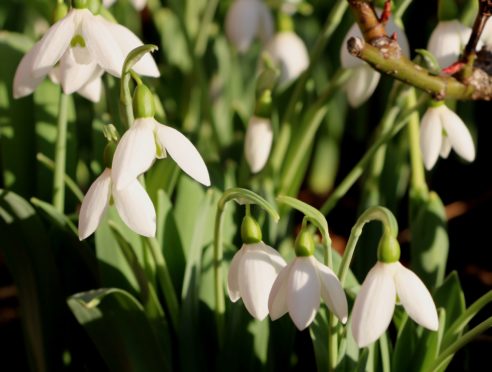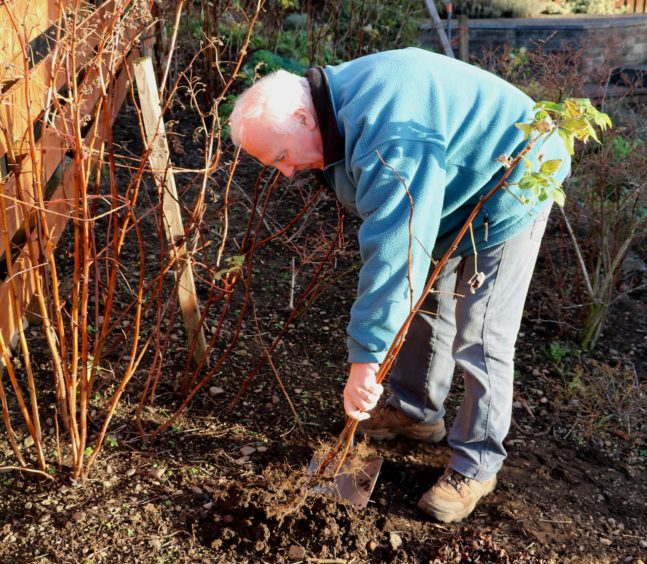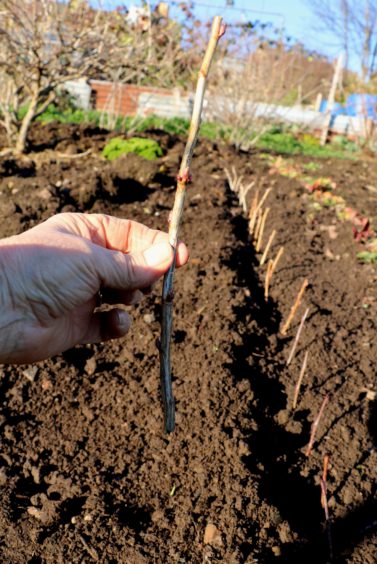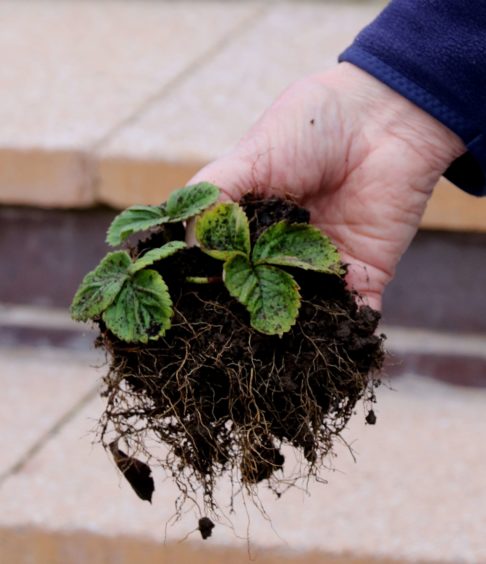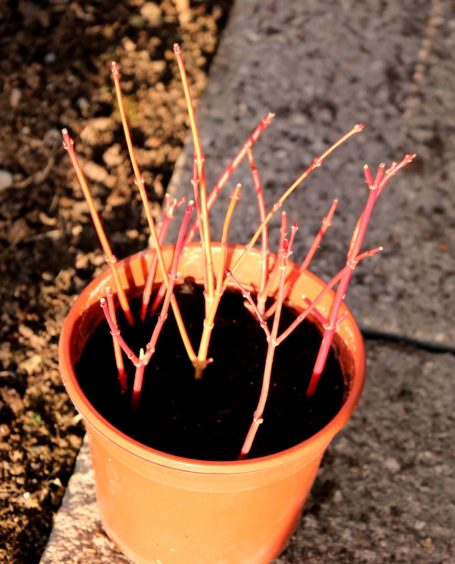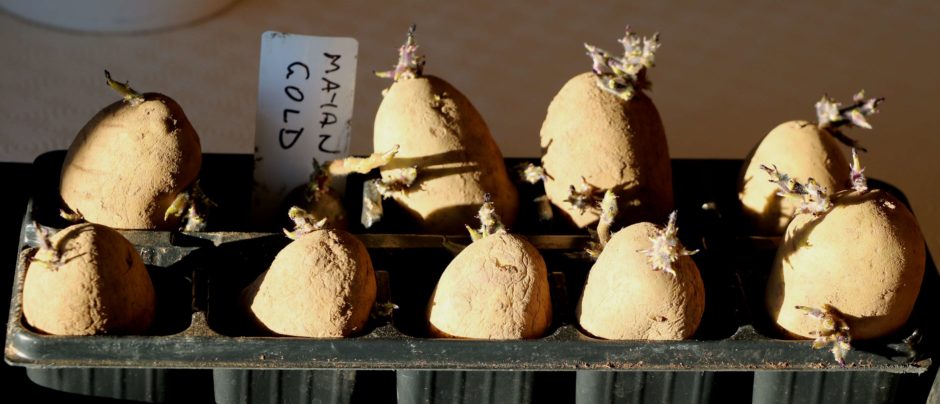Mid-January can be a quiet time in the garden.
Most plants will be dormant and it is still a bit early to sow this year’s seeds.
With a bit of luck the dry sunny days at the beginning of the month were perfect to catch up with the winter digging, and at this point the winter has been relatively mild.
This has helped the snowdrops and aconites to spring into action.
The snowdrops started to flower in mid-December and now the aconites are opening up on sunny days and adding to the show.
However, we still like to keep active so now is a good time to think about propagation of a whole range of plants.
Hardwood cuttings of willow, dogwood, black, red and white currants, gooseberries, philadelphus and Japanese maples can all be taken now and lined out in a protected cold frame or a sheltered border.
Take cuttings about nine inches long and bury two thirds of them in the ground in rows a foot apart spacing the cuttings about six inches apart.
I sometimes bundle up my cuttings and plant them on the top of my compost heap where they will get some bottom heat.
Remove them for lining out at the end of March when the cut end should have callused over and the first root initials will be ready to push through.
The well spaced cuttings have room to grow through summer and be ready for lifting in early winter, when they can be planted out into permanent positions or lined out again with more space to grow into a bigger plant the following year.
They can also be potted up and grown on. Gooseberry bushes are usually grown on a leg to keep shoots well off the ground to prevent soil splashing on the fruits so remove the lower buds, but leave the top two or three buds to form the bush with a clear leg.
The Japanese maples have smaller shoots so cuttings are about six inches long and dibbled around the edge of a shallow pot filled with good compost and placed in the cold greenhouse.
Some plants can be propagated in winter by lifting up suckers growing away from the parent plant.
Both raspberries and saskatoons grow easily from suckers but make sure they have plenty of roots to get them started.
Strawberries can also be propagated at this time using runners that have grown away from the parent plant and lifting them with a good ball of soil.
Traditionally strawberries are planted in rows three feet apart spacing the plants a foot apart, but, as often happens if there are plenty spare runners then plant a lot closer in the row so the first crops will have more fruit.
Blackberries can be tip layered by bending the ends of long shoots down to the ground and pegging them in firmly.
They should be rooted by mid spring. They can also be propagated by using the tips as cuttings, putting them in pots of free draining compost and keeping them in a cold frame or unheated greenhouse over winter.
Layering is also very successful with the evergreen Japanese azaleas, winter jasmine, heathers and hydrangea petiolaris.
It usually helps if you scrape some of the bark off and peg the shoots down into the soil covering an inch or so with top soil. They should be well rooted by next winter.
Berries of chokeberry, blueberry and saskatoons saved from the summer crops had the seeds removed and placed in between layers of damp kitchen roll and placed in the fridge for six weeks, checking on them to keep them moist and free from botrytis.
They were then sown in seed compost, but need a period of cold weather before they will germinate, so keep them outdoors to get exposure to winter weather.
Wee jobs to do this week
This is a good time to look over the seed catalogues and decide which potato varieties to grow this year.
Purchase the seed potatoes and place them in trays in a cool room with good light or a cold greenhouse to let them chit.
Casablanca and Lady Christl are both excellent first earlies and Charlotte and Maris Peer really good second earlies.
Good maincrops include Maris Piper, Sarpo Mira and Amour which has huge potatoes perfect for roasting.
This year I will be trying a row of Mayan Gold.
